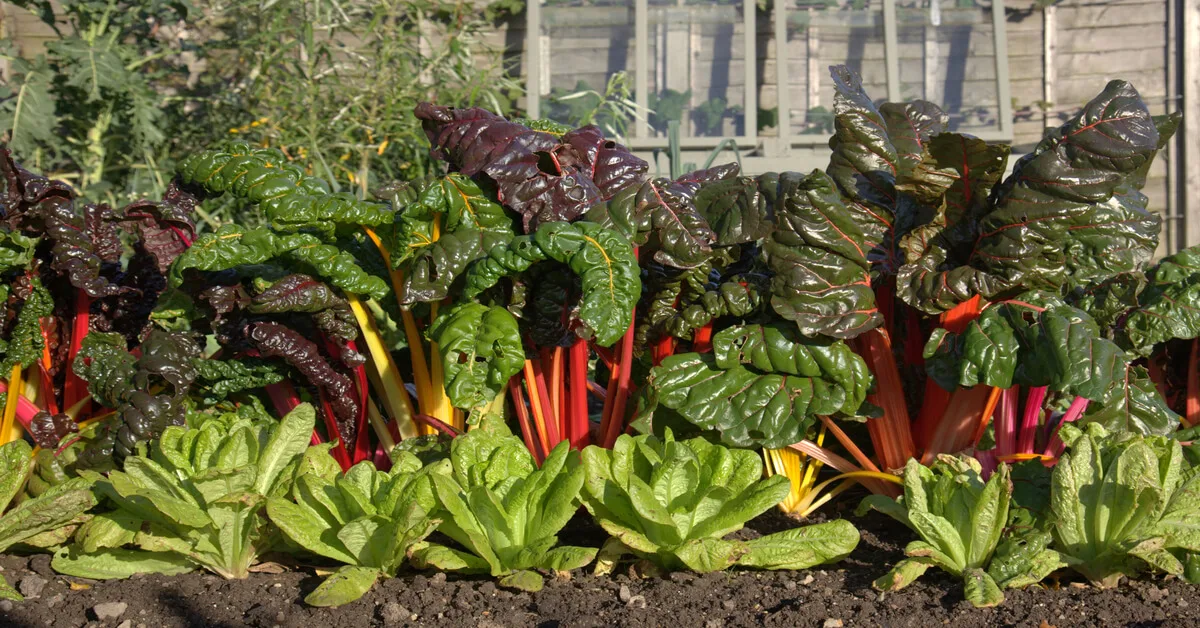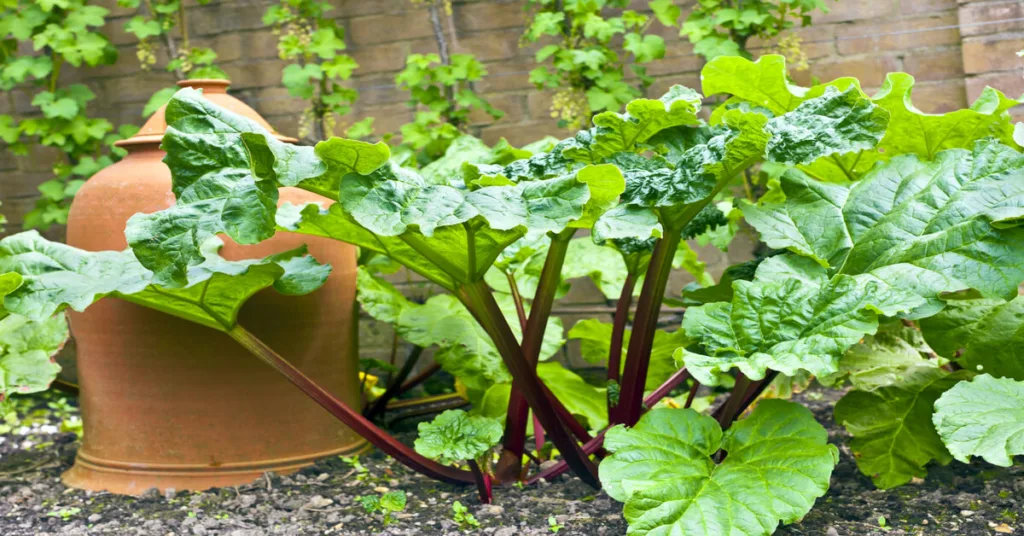Rhubarb (Rheum spp.) is an herbaceous perennial member of the family Polygonaceae. The leaves contain high levels of oxalic acid which is toxic to humans. The stems have very low levels of oxalic acid, making them edible.
The exact origin of today’s garden rhubarb is unknown. Wild rhubarb has been used for medicinal purposes for centuries. Some believe it was first used medicinally more than 1,800 years ago in Asia.
Europeans began trying to cultivate rhubarb in gardens in the 1700s. It naturally hybridized with other wild rhubarb species during this time. This ‘accidental’ hybridization led to the development of what we now call garden rhubarb or pieplant.
Scientists have yet to be able to figure out which species of wild rhubarb garden rhubarb hybridized from. Though it is often given the scientific name (Rheum rhabarbarum) the more appropriate name is Rheum spp.
Though figuring out what to call rhubarb is difficult, companion planting with it is a breeze.
In this article, we’ll explain how rhubarb companion plants can improve their growth. We’ll cover the best companion plants to pair with rhubarb and the plants you should avoid.
Benefits Of Companion Gardening With Rhubarb
Unlike many garden plants, rhubarb doesn’t have a lot of pest problems. As long as you give it enough space to grow, it’s relatively pest free.
The one insect pest that causes significant issues for rhubarb is the rhubarb curculio weevil. They feed on the stalk and leaves causing wilt and decay. Slugs can also damage rhubarb by feeding on the stems and leaves.
Both rhubarb curculio and slug damage can be managed with rhubarb companion planting. This will help reduce the need for spraying pesticides.
Rhubarb plants also need a lot of nutrients to grow well. You can use certain companion plants to improve soil nutrients. This will limit the need for fertilizer applications.
Things To Consider When Companion Planting With Rhubarb
Rhubarb plants grow to about 3 feet tall by 3 feet wide. This can make companion planting a little tricky. If you plant things too close together, foliar diseases can begin to impact rhubarb.
You want to avoid overcrowding rhubarb when companion gardening. If plants are properly spaced to allow for airflow, foliar diseases usually aren’t an issue.
Rhubarb also needs plenty of sunlight to grow well. Some plants do not make good companions for rhubarb because they create too much shade.
The Best Rhubarb Companion Plants

Here is a list of the best plants you can use in your garden with rhubarb. They will provide several benefits to rhubarb without competing with it.
Bush Beans
Bush beans are great garden companions for rhubarb. They have a mutually beneficial relationship.
The bush beans will help increase the amount of nitrogen in the soil. This reduces the need for fertilizer. Bush beans work better than other beans because they won’t block out the sun as much as vining varieties.
The rhubarb will also help repel aphids that feed on bean plants.
Brassicas (Broccoli, Cabbage, Cauliflower, Kale)
While brassicas don’t provide a benefit to rhubarb, they also don’t cause any harm. However, whiteflies are common pests of Brassica plants. Rhubarb repels whiteflies which makes them beneficial to plant with Brassicas.
Garlic
Garlic has a strong odor that repels many insects. Companion planting garlic with rhubarb will protect it from rhubarb curculio weevils.
Onions
Onions are another option for repelling rhubarb curculio weevils. Their smell will help keep the weevils away from your rhubarb.
Sage
Sage is an aromatic herb that does well with rhubarb. It can help repel slugs from your garden. It works best when planted around the edges of the garden bed.
The Worst Rhubarb Companion Plants
Avoid growing the following plants near rhubarb. They can increase pests, decrease nutrients, and block out sunlight.
Cucumbers
Cucumbers are known as heavy feeders that use a lot of soil nutrients to grow. They will compete with rhubarb for nutrients, causing it to struggle.
Melons and Pumpkins
Melons and pumpkins are in the same family as cucumbers, but they cause a different problem for rhubarb. Their vegetation from melons creates a lot of shade in the garden. This can prevent rhubarb from getting enough sunlight, limiting rhubarb’s growth.
Sunflowers and Thistle
Rhubarb curculio weevils will also feed on sunflowers and thistles. It is best to keep these plants away from your rhubarb. Planting them together can make your garden even more attractive to these beetle pests.
Use the table below as a quick reference guide when planning your rhubarb companion garden.
| Beneficial Rhubarb Companion Plants | Benefit | Detrimental Rhubarb Companion Plants | Detriment |
| Bush beans | Increases nitrogen | Cucumber | Competes for nutrients |
| Brassicas | Neutral plant, rhubarb repels whiteflies | Melons and pumpkins | Competes for sunlight |
| Garlic | Repels weevils | Sunflowers | Attracts weevils |
| Onion | Repels weevils | Thistle | Attracts weevils |
| Sage | Repels slugs |


